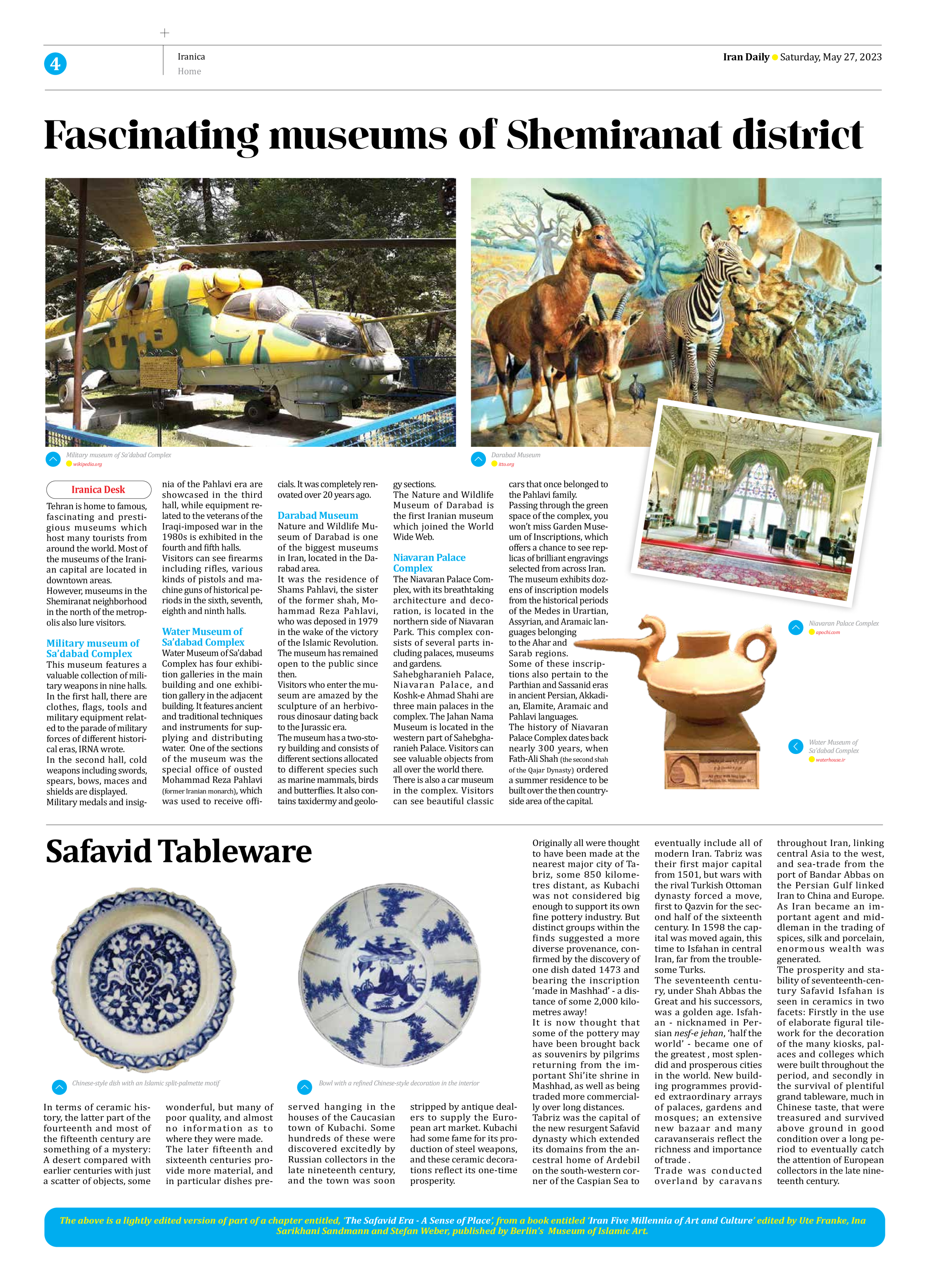
Safavid Tableware
In terms of ceramic history, the latter part of the fourteenth and most of the fifteenth century are something of a mystery: A desert compared with earlier centuries with just a scatter of objects, some wonderful, but many of poor quality, and almost no information as to where they were made.
The later fifteenth and sixteenth centuries provide more material, and in particular dishes preserved hanging in the houses of the Caucasian town of Kubachi. Some hundreds of these were discovered excitedly by Russian collectors in the late nineteenth century, and the town was soon stripped by antique dealers to supply the European art market. Kubachi had some fame for its production of steel weapons, and these ceramic decorations reflect its one-time prosperity.
Originally all were thought to have been made at the nearest major city of Tabriz, some 850 kilometres distant, as Kubachi was not considered big enough to support its own fine pottery industry. But distinct groups within the finds suggested a more diverse provenance, confirmed by the discovery of one dish dated 1473 and bearing the inscription ‘made in Mashhad’ - a distance of some 2,000 kilometres away!
It is now thought that some of the pottery may have been brought back as souvenirs by pilgrims returning from the important Shi’ite shrine in Mashhad, as well as being traded more commercially over long distances.
Tabriz was the capital of the new resurgent Safavid dynasty which extended its domains from the ancestral home of Ardebil on the south-western corner of the Caspian Sea to eventually include all of modern Iran. Tabriz was their first major capital from 1501, but wars with the rival Turkish Ottoman dynasty forced a move, first to Qazvin for the second half of the sixteenth century. In 1598 the capital was moved again, this time to Isfahan in central Iran, far from the troublesome Turks.
The seventeenth century, under Shah Abbas the Great and his successors, was a golden age. Isfahan - nicknamed in Persian nesf-e jehan, ‘half the world’ - became one of the greatest , most splendid and prosperous cities in the world. New building programmes provided extraordinary arrays of palaces, gardens and mosques; an extensive new bazaar and many caravanserais reflect the richness and importance of trade .
Trade was conducted overland by caravans throughout Iran, linking central Asia to the west, and sea-trade from the port of Bandar Abbas on the Persian Gulf linked Iran to China and Europe. As Iran became an important agent and middleman in the trading of spices, silk and porcelain, enormous wealth was generated.
The prosperity and stability of seventeenth-century Safavid Isfahan is seen in ceramics in two facets: Firstly in the use of elaborate figural tilework for the decoration of the many kiosks, palaces and colleges which were built throughout the period, and secondly in the survival of plentiful grand tableware, much in Chinese taste, that were treasured and survived above ground in good condition over a long period to eventually catch the attention of European collectors in the late nineteenth century.
The above is a lightly edited version of part of a chapter entitled, ‘The Safavid Era - A Sense of Place’, from a book entitled ‘Iran Five Millennia of Art and Culture’ edited by Ute Franke, Ina Sarikhani Sandmann and Stefan Weber, published by Berlin’s Museum of Islamic Art.







